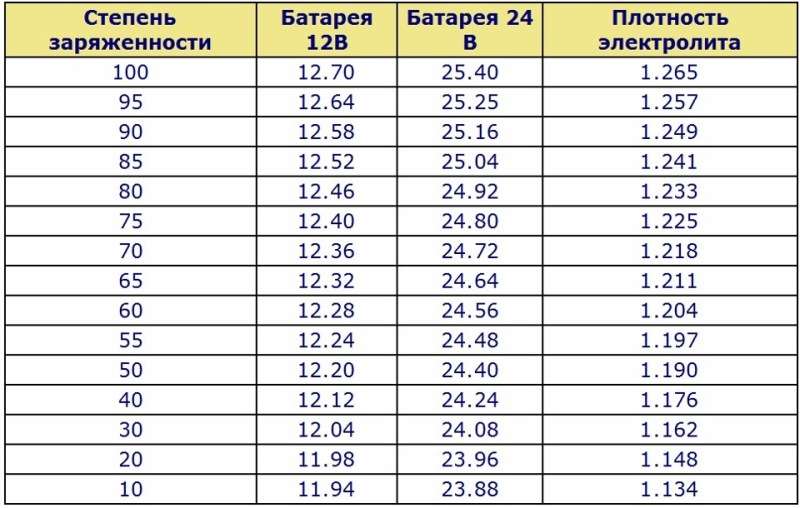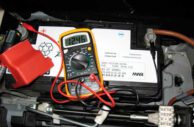
What voltage should be on the battery
Content
In this article, we will discuss the normal voltage on the battery under various conditions. But first, we propose to figure out what the voltage on the battery affects?
It directly affects engine starting. If the voltage is sufficient, then the engine will start easily, but otherwise, you may hear the sluggish rotation of the engine by the starter, but the start will not happen. It should be noted here that on some cars there is a restriction on battery charging, i.e. if it is less than a certain value, then the starter will not even start rotating.
To avoid such situations, let's consider the amount of normal voltage on the car battery.
Normal vehicle battery voltage
The normal battery voltage is considered to be: 12,6 V

Great, we know the figure, but how and with what to measure it? There are several devices for this purpose:
- Voltmeter;
- Multimeter (read on our portal: how to use a multimeter);
- Load fork (details, how to tear the battery with a load plug).
What voltage should be on the battery after charging?
By and large, it should be normal, i.e. 12,6-12,7 Volts, but there is one nuance here. The fact is that immediately after charging (in the first hour), measuring devices can show a voltage of up to 13,4 V. But such a voltage will last no more than 30-60 minutes and then return to normal.

Conclusion: after charging, the voltage should be normal 12,6-12,7V, but TEMPORARILY can be increased to 13,4V.
What if the battery voltage is less than 12V
If the voltage level dropped below 12 volts, it means that the battery is more than half discharged. Below is an approximate table by which you can determine the charging of your battery.

- from 12,4 V - from 90 to 100% charge;
- from 12 to 12,4 V - from 50 to 90%;
- from 11 to 12 V - from 20 to 50%;
- less than 11 V - up to 20%.
Battery voltage when the engine is running
In this case, if the engine is running, then the battery is charged using a generator and in this case, its voltage can increase to 13,5-14 V.
Reducing battery voltage in winter
Everyone is familiar with the story when, in a fairly severe frost, many cars cannot start. It's all to blame for the frozen and most likely old battery. The fact is that car batteries have such a characteristic as density, which affects how well the battery holds a charge.
Accordingly, if the density falls (this is what frosts contribute to), then the battery charge drops with it, thereby preventing the engine from starting. The battery requires either warming up or recharging.
This usually does not happen with new batteries.
It is worth noting that the batteries are able to restore their voltage over time, but under certain conditions: if the battery was discharged by high short-term loads (you turned the starter and tried to start). In this case, if you let the battery stand and recover, then most likely you will have enough for a couple more attempts to start the engine.
But if the battery sat down under the influence of a prolonged load, albeit a small one (for example, a radio tape recorder or a charger in a cigarette lighter), then after this, the battery will most likely not be able to restore its charge and will need charging.
Car battery voltage video
Questions and answers:
What voltage should the battery provide without load? The actual voltage of the storage battery without switched on consumers should be in the range of 12.2-12.7 volts. But the quality of the battery is checked under load.
What is the minimum voltage for the battery? In order for the battery to maintain its performance, its charge must not fall below 9 volts. Charging is required at a rate of 5-6 volts.
When is a battery charged? Boiling of the electrolyte indicates a full charge. Depending on the type of charger and battery charge, the charging process takes 9-12 hours.

